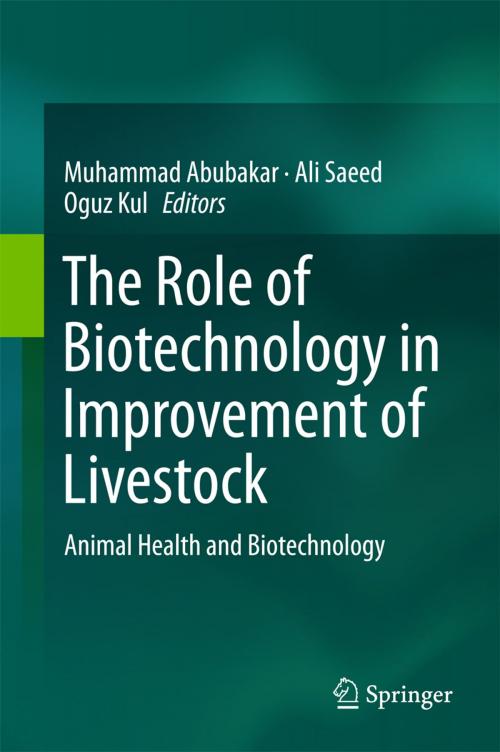The Role of Biotechnology in Improvement of Livestock
Animal Health and Biotechnology
Nonfiction, Science & Nature, Science, Biological Sciences, Zoology| Author: | ISBN: | 9783662467893 | |
| Publisher: | Springer Berlin Heidelberg | Publication: | April 7, 2015 |
| Imprint: | Springer | Language: | English |
| Author: | |
| ISBN: | 9783662467893 |
| Publisher: | Springer Berlin Heidelberg |
| Publication: | April 7, 2015 |
| Imprint: | Springer |
| Language: | English |
This book examines how biotechnology can improve livestock breeding and farming, and thereby also animal products. In the first chapters the reader will discover which techniques and approaches are currently used to improve animal breeding, animal health and the value of animal products. Particular attention is given to reproduction techniques, animal nutrition and livestock vaccines that not only enhance animal health but also have a significant effect on human health by ensuring safe food procurement and preventing zoonotic diseases. In addition, modern biotechnology can increase not only productivity but also the consistency and quality of animal food, fiber and medical products. In the second part of the book, issues such as how animal biotechnology could affect the environment and the important topic of animal waste management are explored. In the concluding chapter, the authors discuss future challenges related to animal biotechnology. This work will appeal to a wide readership, from scientists and professionals working in animal production, to those in farm animal management and veterinary science.
This book examines how biotechnology can improve livestock breeding and farming, and thereby also animal products. In the first chapters the reader will discover which techniques and approaches are currently used to improve animal breeding, animal health and the value of animal products. Particular attention is given to reproduction techniques, animal nutrition and livestock vaccines that not only enhance animal health but also have a significant effect on human health by ensuring safe food procurement and preventing zoonotic diseases. In addition, modern biotechnology can increase not only productivity but also the consistency and quality of animal food, fiber and medical products. In the second part of the book, issues such as how animal biotechnology could affect the environment and the important topic of animal waste management are explored. In the concluding chapter, the authors discuss future challenges related to animal biotechnology. This work will appeal to a wide readership, from scientists and professionals working in animal production, to those in farm animal management and veterinary science.















